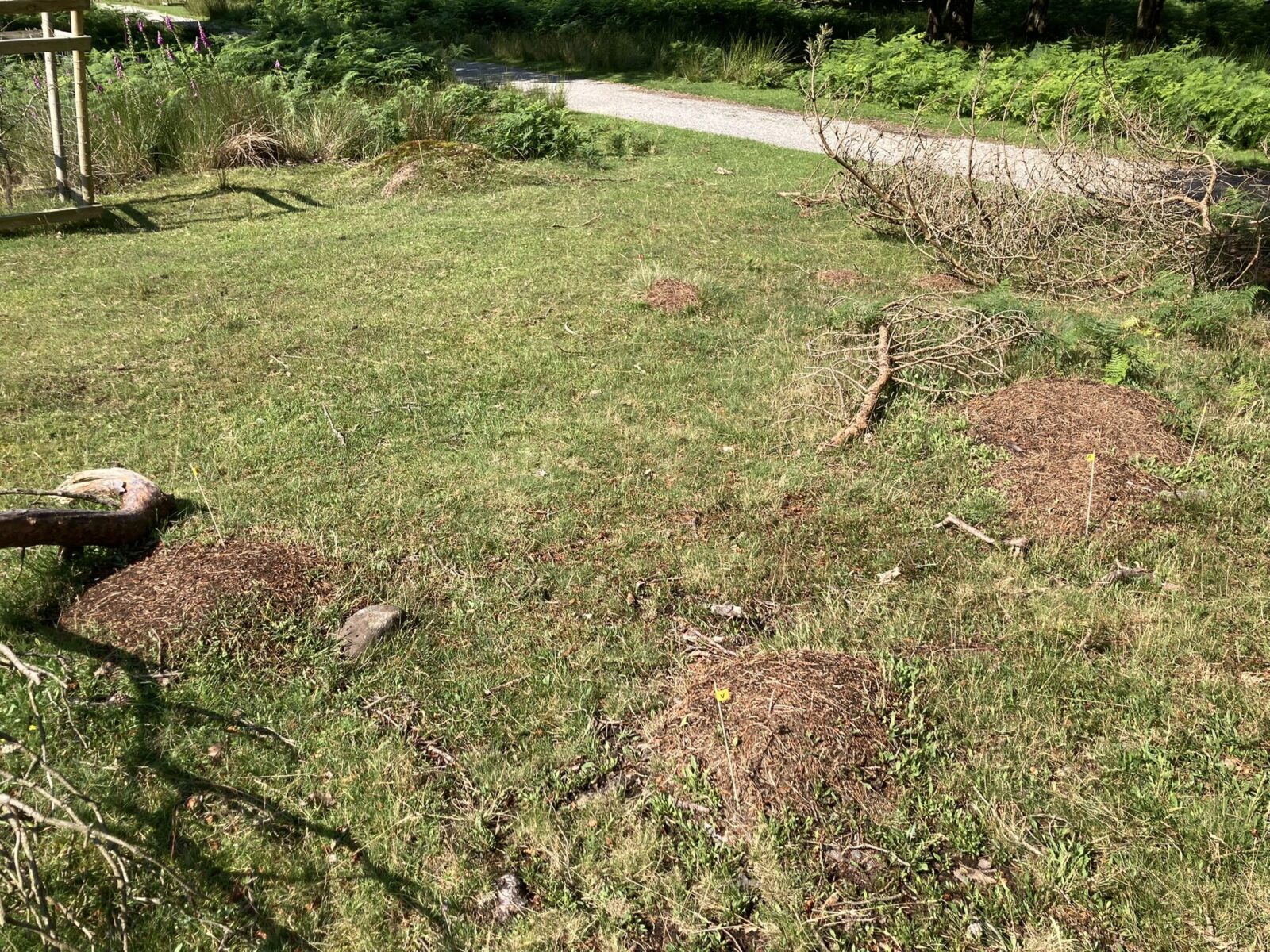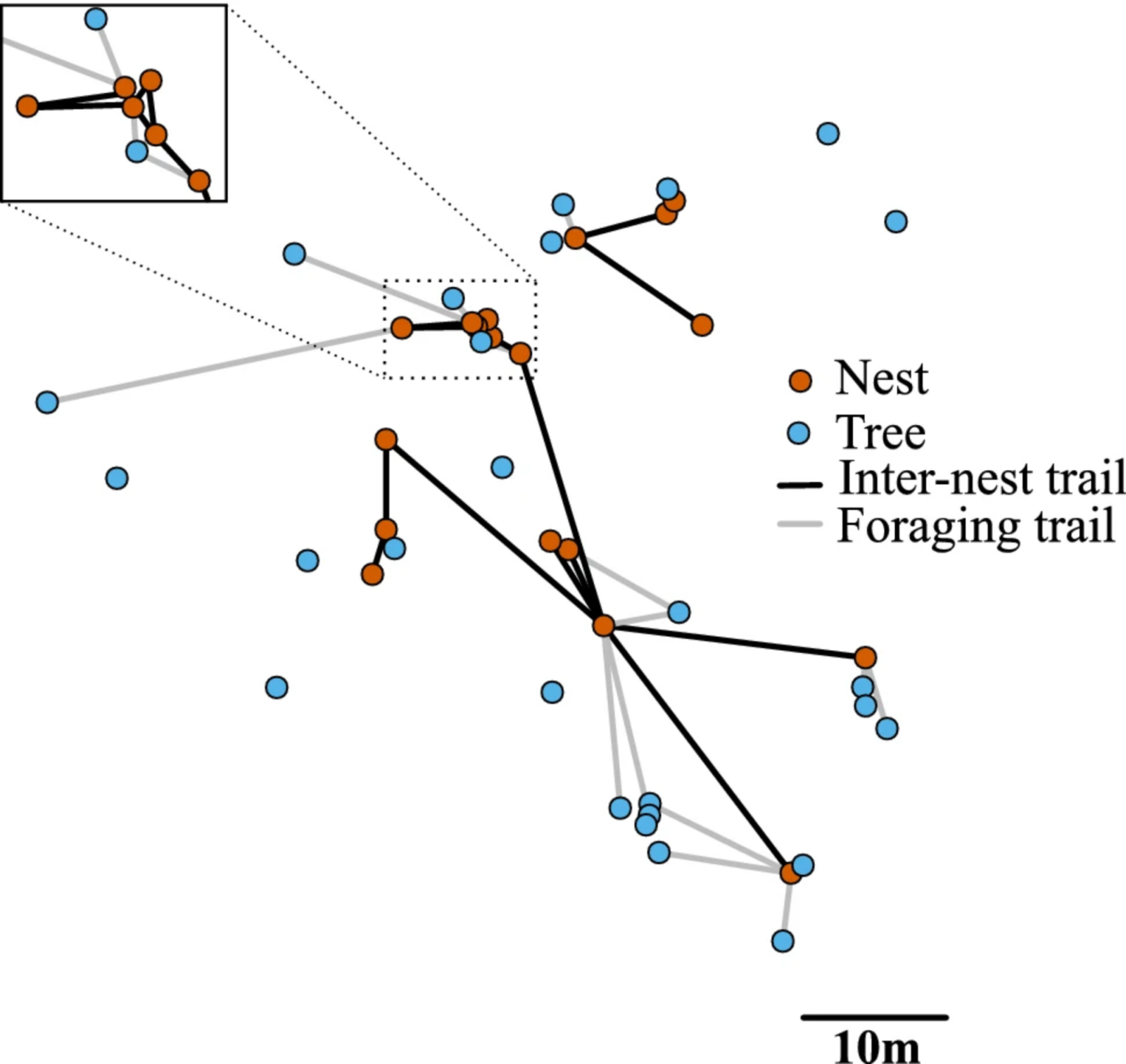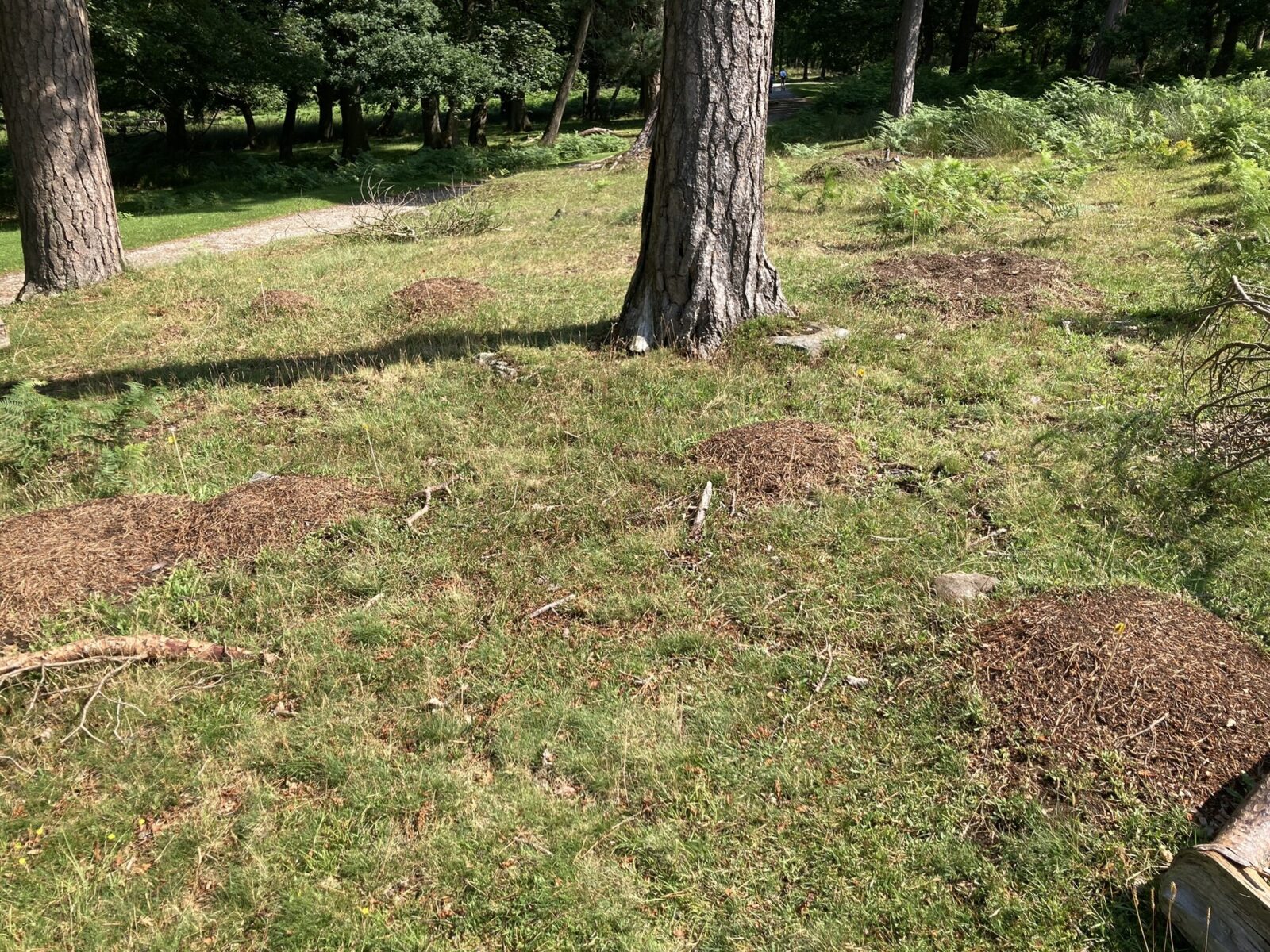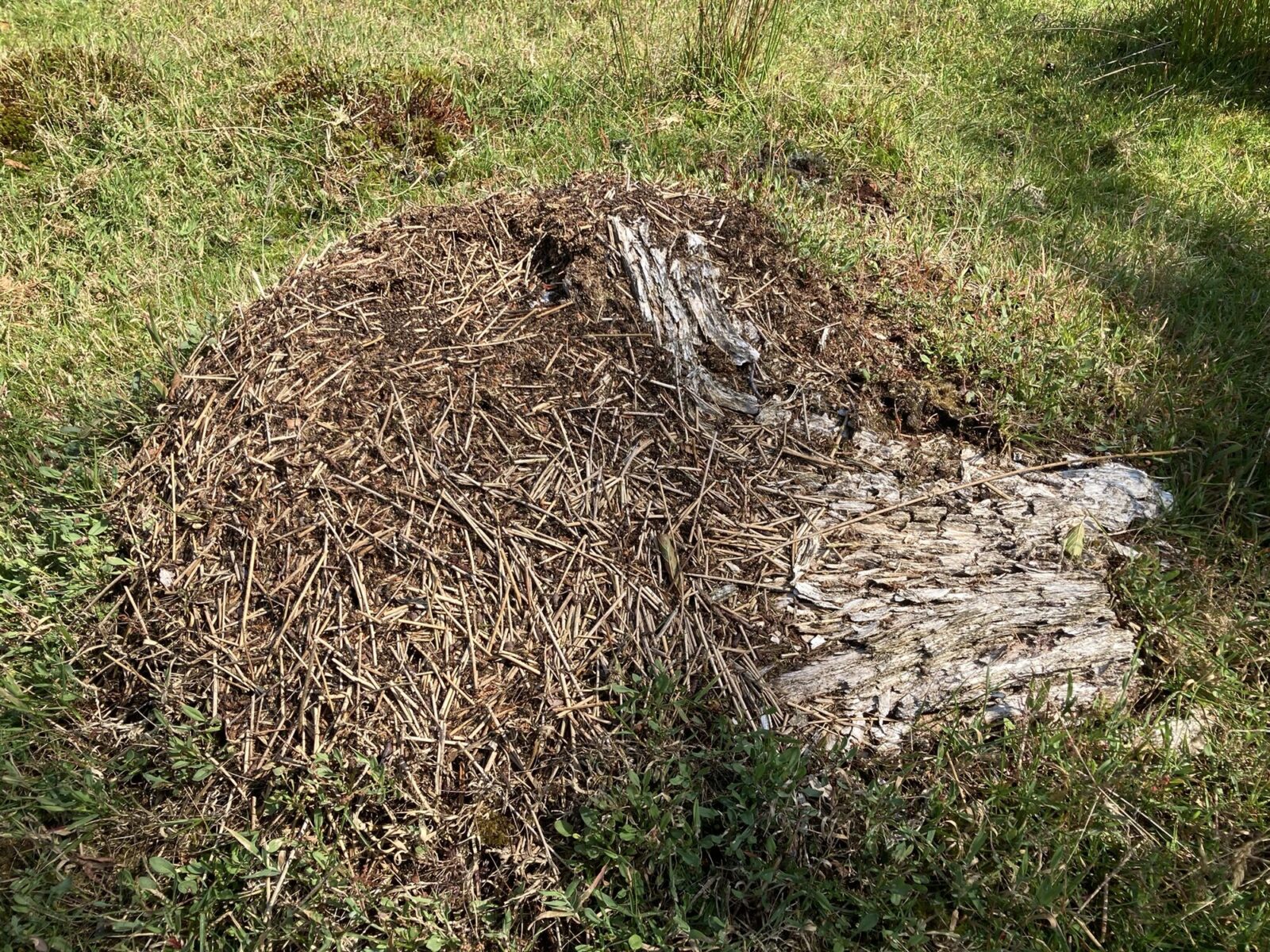In some ant species, the colony is spread across multiple spatially separated, but socially connected nests: ants can move from one nest to the other without being attacked, and they can also exchange resources such as food from oversupplied to undersupplied nests. We refer to these multi-nest colonies as polydomous (a word whose greek roots literally mean that the colony has ‘multiple houses’).
The wood ant Formica lugubris is one such ant species that can form polydomous colonies. Interestingly, other populations of ants of the same species can also form monodomous colonies – colonies in which ants occupy a single nest.
The images shown here represent some of the mounds built by a single colony of Formica lugubris (‘colony 3’). This is a polydomous colony comprising over 10 nests (sometimes over 30) found at a study site in Longshaw (a woodland pasture). In some years the colony forms a single connected network, and in other years it temporarily fragments into separate sub-networks.
Formica lugubris nests can look quite different when they are in different environments. See https://www.morphospace.org/our-nests/formica_lugubris_Cropton_m21/ for an example of nests built in a plantation woodland.




